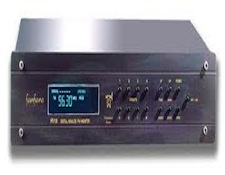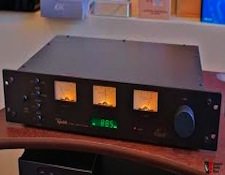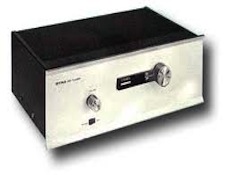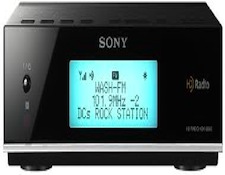It’s the time of year for saving money!

When
I ask folks of my generation about their earliest recollections of listening to
music a majority say something like, “I remember listening to the radio under
covers (so my parents wouldn’t hear) after I was supposed to be asleep…” Most
point to the radio, FM radio, as their first electronic connection to music.
I
know that listening to Murray the K (the fifth Beatle) was my introduction to
rock and roll, soon followed by college radio stations such as WFMU. After
several years with receivers, including a Harman Kardon Nocturne, I graduated
to an FM tuner. I thought I’d list, in no particular order, some of my favorite
FM tuners over the years.

Pioneer Tx-9100 – I still have one of
these sitting on one of my equipment shelves. I’ve never had it adjusted
or repaired and it still works perfectly. And while it doesn’t bring in distant
stations as well as a Fanfare, Magnum Dynalab, or Scott 310-E, its performance was not too far behind. Also the TA-9100 includes a very good headphone amp, making
it a super late night all-in-one listening station. Since it’s only worth about
$150 on the used market, and would cost at least $40 to ship anywhere due to
its heft, I’ll probably keep this one forever…

Fanfare FM1 – I used an FM1 as the tuner
in my big room system for over five years. It always worked perfectly and was
among the most sensitive and selective tuners I’ve ever owned. I’d still have
it except I listened to over-the-air radio so rarely that it sat, unused for
months. It was worth too much to sit idle, so I sold it.

Magnum Dynalab Etude – This was my favorite
high-end tuner because it sounded so neutral. Especially on live broadcasts of
the Boston Symphony Orchestra on Friday afternoons, the Etude sounded better
than any readily available commercial recording of the orchestra. I used it with the Signal Sleuth and FM-1 antenna, both of which I still own and use.

Scott 310-E – Some collectors claim
that the Scott 4310 was H.H. Scott’s finest tuner (it was certainly Scott’s
most complex tuner), but I found the 310-E to be the best-performing Scott
tuner I ever owned. It isn’t the prettiest because it looks more like an early
Scott Solid-state component than one from Scott’s golden age, but it was very
stable and had that slight euphonic tube-given warmth that made even the rudest
music sound listenable

Scott LT-110/Ampex L-110
tuner –
I’ve only seen one example of this model, which was the one I purchased from
“The Audio Exchange” in Cambridge, Ma. Back in the early 1970’s along with a
matching LK-72 integrated amplifier. Both were built from kits by Ampex in
their factory and outfitted with an Ampex faceplate. I kept the tuner for years
because it was so rare and such a good performer – it was the equal of the
Scott 310-E on all but the most hard to receive stations.

Marantz 10B – I never owned a 10B,
but I listened to quite a few over the years. But, any audiophile who doesn’t
lust after a Marantz 10B is probably wired wrong. Just the looks and the feel
of its tuning wheel are enough to make almost most audiophiles with the
disposable income reach for their wallet. Why didn’t I succumb? Too cheap, I
guess…

McIntosh MR 77 – I owned a fully
tricked-out MR 77 for a few years. It always performed perfectly and it had
that Mac look, but I always felt it was a dark and hooded sounding tuner, and
when you consider that FM hasn’t got any appreciable signal output above 13
kHz, it had to be some serious attenuation for it to be so noticeable. It was
built like a tank.

Dyna FM-3 – I’ve had at least
three different FM3s over the years. The best one was a heavily modified FM-3
that had a very early front panel that looked more like an FM-1. Except for an
intermittent physical transformer hum (to fix the hum you had to put a VPI
brick on it) it worked exceedingly well. When properly adjusted, a Dyna FM-3 makes
an excellent and inexpensive FM source. And Dyna made enough tuners that
they’re easy to find and fix.

Sony XDR-F1HD – This Sony was my last
FM tuner. I bought it for $50 and it was easily the best tuner I ever owned in
terms of signal sensitivity and selectivity. Too bad it sounded so “meh.”
Everything was there, but it was all so gray and ordinary. I kept it for a
couple of years, and then sold it.

Sonos and Logitech – I only listen to FM
radio via the Internet nowadays. Both the Sonos and the Logitech wireless music
systems deliver FM radio with better fidelity and convenience than over-the-air.
With the Sonos I can even search for my favorite programs, such as Prairie Home
Companion, and it shows me when the next show will be playing. And while
stations broadcasting 64 Kbps or less sound worse than over-the-air FM,
broadcasts of 128 kbps or greater sound way better than over-the-air FM.





I’ve not heard a single tuner you mention – but I do have a few of my own favs, a couple of which quite surprised me – Quad FM4, Yamaha T1, Marantz 2130, several Pioneers, currently a 9500, Sanyo T35 (huge surprise there but #26 in the FM Tuner Info Shoot-Out list) several decent Sansui unit and couple of very good Kenwoods. But, all in, I’d really like to get my hands on a Kenwood L-02T. Just because.
I have an old Luxman 310 Tuner that has Dolby circuitry in it that I am still using. It is phenomenal. I have a client that I sold a Carver TX11b to a number of years ago. He uses a directional FM antenna to pick up Stereo FM signals over a hundred and fifty miles away. He tried the unit on trial before he bought it. I gave him a week, he was back in less than a day to pay for it.
I’ve been listening to one of those Carvers since I was a baby and my dad picked one up at the PX in Germany. Nowadays it’s connected to some aerial from the underside of an airliner that helps it get ungodly reception, and through the C-1 preamp and M400t amp, it’s probably the best FM tuner I’ve ever listened to.
I miss my McIntosh MX-115 that was hot rodded by Richard Modafferi of McIntosh fame. I don’t believe it suffered from the darkness that your MR-77 did.
Where oh where is Tandberg, either a 3011a or 3001a, best tuner ever made.(Yes, I know that’s a contentious statement..
No Sequerra Model 1 and it’s children? With a good signal “in the clear” the wide-band front end would result in some of the lowest distortion possible from a tuner. Yamaha’s T1 and T2 should be there too, and the NAD 4155 may be the winner for SCA immunity.
THis is a list of MY favorite tuners, not “the Best” tuners. That’s for some other time…
Great article! Agree with FMGeek below with mention of the Sequerra tuners….and I really had great time with my old Lafayette SQ-5000 quad receiver’s tuner. Lived 130 miles north of Houston and could easily get their stations with very little noise (with directional ant and pre-amp). If I recall many of Layfayette’s products were from Pioneer? Now live 35 miles from Indianapolis, still with outside directional ant and pre-amp, but now in LOVE with HD Radio on my tuner!
I had a few tuners over the years. Sony’s highs most often sounded too forward to me. I haven’t heard those listed but I went thru a few Kenwood (praised for sensitivity KT-6040 was one of them), Yamaha, Technics, Pioneers. My favourite for a long time was and still is Technics ST-G5. Very natural sound (I listen mostly to classical music).
I can’t believe that the sonos mention at the end didn’t make a few old school heads explode. I like the sonos too, if you slide it inside a Peachtree Integrated with the cherry wood wrap, it looks almost as retro as the others. I too like it’s reception advantage, it blows away all of those other “tuners”, I get way better reception since I switched to it.
Any comment for Gaundig T5500
Pioneer F-93. It sounds nearly indistinguishable (audio) from the F-91, but has user controls the 91 lacks. These include fine tuning, digital numeric Signal Strength readouts, world beating sensitivity and fine selectivity. Criticisms regarding its complexity ring shallow to anybody who’s had to live with (any) Microsoft Operating System. It seems to be underrated because of a snub from an American Tuner designer who said nothing about the tuner one way or another, but just refused to try to modify it. It was given a lukewarm review from Stereophile, where their worst insults were only limited to its sound not being quite as good as the CD player feeding the transmitter. But Stereophile DID recommended it and it won ALL the RF competitions easily. (Over the Sequerra reference, which is noteworthy.) They didn’t even try to argue it. So, while there’s a few spots on the Interwebs that vilify it, the one thing never admitted in their assessment is the same criticism they level at someone who questions their rankings, i.e., they’ve never heard one personally. Listen for yourself. Trust your ears. If you like the Pioneer house sound (TX-9800, 9500 II, etc.) I don’t think you’ll have any complaints whatsoever.
In the old days i was very pleased with my Toshiba ST-910.
Best tuner for me the excellent Technics ST-G90L Gramophones recommend tuner for many years.
The reason “live broadcasts of the Boston Symphony Orchestra sounded better than any readily available commercial recording of the orchestra” is that the LISTENERS of WGBH took up a collection to purchase two very high quality mics, and folks from the Boston audio society spent an inordinate amount of volunteer time placing the mics JUST SO over the orchestra. Yes, the listeners.
And Victor Campos would borrow record company master tapes, drive up to the transmitter (in the Great Blue Hills) and plug in a superb reel-to-reel player directly into the tranny AHEAD of all the limiting equipment.
The RF performance of the Sony XDR-F1HD is so awesome, I love it. Why did someone not get hold of the tech behind it and make something that sounded better, even if Sony wasn’t going to do it?
Not to forget Marantz ST-64 …very cheap but with sound and reception that easily outperforms big players like Yamaha tx-1000 costing 3 times the price of Marantz…it kills Yamaha with everything – space,clarity,dynamic…such enjoyable sound of st-64 you can’t find everywhere !